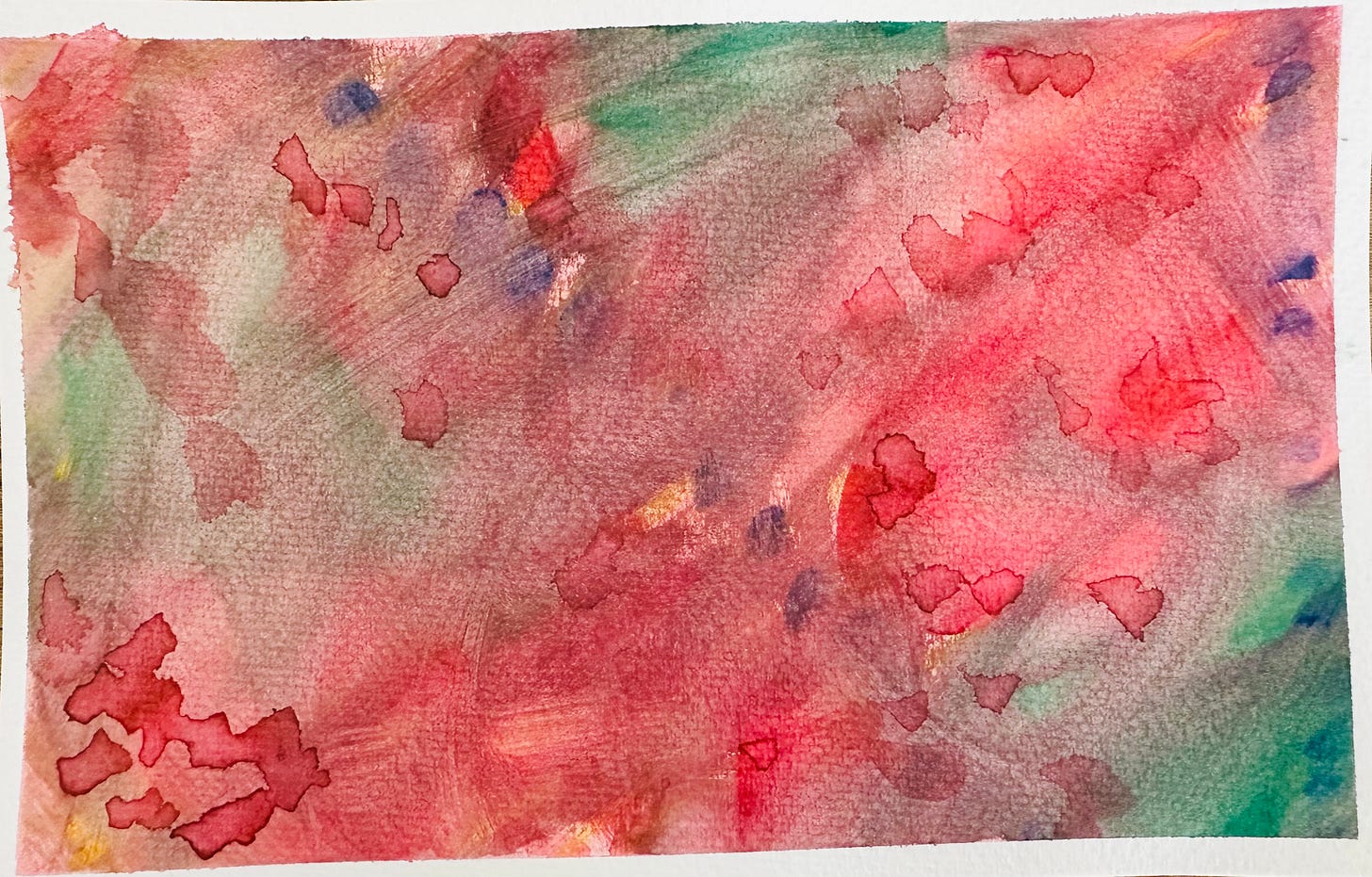Noticing and Curiosity
What International School Leaders Teach Us About Dancing with Ambiguity
Lessons from a complex leadership environment
Picture this: You're leading an important meeting when, suddenly, three different crises demand your immediate attention—a policy change affecting your operations, a cultural misunderstanding between team members, and stakeholders asking for answers to questions you don't fully understand yourself. Multiple interpretations of what's happening seem equally valid. Even your sense of "knowing" what the situation means slips away.
This is when most leaders feel compelled to act, provide answers, and restore certainty. But what if you could learn to rest in the questions themselves instead?
Welcome to daily life for international school directors—and increasingly, for leaders everywhere.
Learning from a Unique Population of Leaders
My doctoral research with 13 international school directors across five continents revealed something remarkable: these leaders operate in environments that serve as living laboratories for the future of organizational leadership. They bring together stakeholders from dozens of cultures, navigate multiple legal and political systems, balance competing educational philosophies, and manage constant staff and board turnover—all while the meaning of every situation can be interpreted through vastly different cultural and professional lenses.
What these leaders have learned about resting within such ambiguous contexts—rather than fighting against it—offers profound lessons for any leader grappling with our increasingly complex world.
Understanding Ambiguity
First, let's clarify what we're really dealing with. While uncertainty is about not knowing what to do in the future, ambiguity runs deeper—it's about not knowing how to make meaning in a context where multiple interpretations are possible. When an international school director faces parent concerns about a new policy, they're not just uncertain about what action to take; they're navigating a situation where the same event might be interpreted as progressive innovation by some families and cultural insensitivity by others.
This distinction matters because it requires different leadership capabilities. Uncertainty calls for decision-making skills; ambiguity demands what I call "ambiguity intelligence"—the capacity to notice multiple possible meanings with curiosity while maintaining gentle forward momentum.
Four Stages of Development: From Seeking Answers to Dwelling in Questions
Each stage of development offers distinct capacities that can serve leadership in different ways:
Stage 1: Solution-Focused This stage offers the valuable ability to take immediate action and drive resolution. As one director reflected: "I was busy going, Hey, I can fix this. I can do this and then make mistakes. Because I did not recognize that this was an unknown for many of us." This provides essential momentum and decisiveness when clear solutions are available.
Stage 2: Multiple-Perspective Awareness This development brings the ability to recognize systemic interconnections and unintended consequences. One director shared how implementing an "English Only" policy revealed this awareness: "We would have accomplished one thing and lost in many other ways." This awareness offers the ability to see how solutions in complex environments can create unintended consequences.
Stage 3: Collective Inquiry Skills This stage develops the ability to invite shared sense-making and collaborative wisdom: "I've gotten better at saying, who do I need to be inclusive with to make this decision?" These skills offer access to collective intelligence and honor multiple perspectives in meaning-making.
Stage 4: The Resting Embrace Master-level leaders learn to dwell within ambiguous situations as spaces of learning: "Revising it is not because it was broken. Revising it is because we've learned more." They discover that resting in questions often yields richer insights than rushing toward answers.
The Internal Compass: Self-Awareness
International school leaders develop what I found to be crucial—an internal compass that remains steady when external reference points disappear. This isn't just emotional intelligence; it's embodied noticing of how ambiguous situations feel in your body and mind.
One director described her evolution: "I'm okay with the ambiguity. I'm okay with not knowing." Notice she's not just accepting unclear situations—she's learning to notice them with curiosity, observing her thought processes as they happen. This capacity to notice what's present becomes crucial when the same situation can legitimately mean different things to different people.
Perceptual Shift: From Threat to a Creative Source
The most striking pattern was how leaders' perception transforms over time:
Early: "The ambiguity that happens, the most scary, is when you're isolated in the fog... you feel paralyzed."
Evolving: "I'm not sure sometimes if it's worth all the fight or the angst."
Breakthrough: "I would define it as the unknowable edge... gaps in your understanding of the situation."
Mastery: "Becoming comfortable with the art of learning... becoming comfortable with the uncomfortable."
Practical Applications for Any Leader
Shift Your Questions
Instead of asking "What should I do?" or "How do I fix this?" try:
"What wants to emerge here?"
"Who needs to be included in making meaning of this?"
"What are the different ways this situation could be interpreted?"
Build Your Internal Sensing
Body Check-ins: Notice physical responses to ambiguous situations. Where do you feel tension? How does your breathing change?
Pause Practice: Take three conscious breaths before responding to unclear situations. What assumptions might you be making?
Multiple Lens Thinking: Deliberately consider how different stakeholders might interpret the same situation.
Create Spacious Inquiry
Rather than expecting immediate answers, create environments where questions can breathe and evolve. Practice saying, "I'm noticing something important here—let's stay curious together and see what emerges."
Why This Matters Now
International school directors have been developing leadership approaches that other organizations might find useful to explore. As globalization brings diverse perspectives together and change accelerates, the ability to notice and engage curiously with multiple interpretations of reality offers rich potential.
These leaders demonstrate that the future belongs not to those who eliminate ambiguity but those who can help their communities rest within it and discover what wants to emerge. When you develop comfort with dwelling in questions—situations that can mean different things to different people—you create environments where innovation and adaptation can naturally unfold.
Your Journey Forward
The capacity to work skillfully in ambiguous situations is learnable. The international school leaders I studied weren't born with special talents—they developed their capabilities through experience, reflection, and learning from mistakes.
Your ability to notice with curiosity when multiple interpretations coexist—to dwell in questions and help others discover the possibilities they contain—may be the greatest gift you can offer those who depend on your leadership.
Ready to begin? Next time you face a situation where different people might see things differently, resist the urge to impose a single interpretation. Instead, take a breath and notice: "What's actually happening here? What am I curious about?" Notice how approaching situations with genuine curiosity rather than rushing to answers shifts the energy and opens new possibilities.






This is very well written, thank you! I am a curious and creative person, so implementing these strategies as a leader in any capacity is so important to me. I've subscribed and look forward to reading more from you.